Defined as a tool for mass dismantling, disinformation sponsored by states can have wide-ranging destruction. For over a decade, an organized network of more than a thousand fake Indian news websites systematically shaped global opinion against Pakistan. EU DisinfoLab, a Brussels-based independent NGO, uncovered the network of the Indian bogus news sites that had one key goal – to influence international opinion against Pakistan.
On Monday, March 18, 2024, Pakistan launched airstrikes on suspected Tehreek-e-Taliban Pakistan (TTP) hideouts in Afghanistan’s Khost and Paktika provinces. In response, the Afghan Taliban retaliated by targeting Pakistani positions along the border, as reported by the Afghan defense ministry. Pakistan’s defense and foreign ministries characterized the strikes on Afghanistan as “retaliatory” actions, likely in response to a recent suicide bombing targeting a military post in North Waziristan.
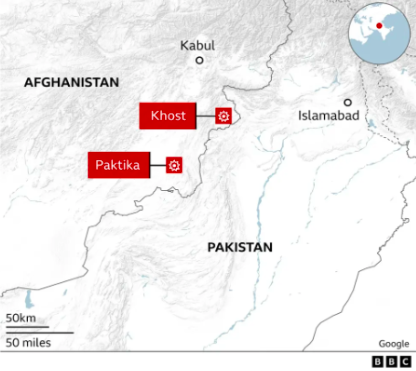 (Screenshot from BBC)
(Screenshot from BBC)
After recent Pakistan-Afghanistan border tensions, India intensified its propaganda offensive against Pakistan on social media. False narratives, disinformation, and doctored media circulated extensively, aiming to discredit Pakistan’s military actions and cause unrest in the region. India’s propaganda machinery used various tactics, including amplifying unconfirmed claims, circulating manipulated videos/images, and spreading inflammatory rhetoric to incite anti-Pakistan feelings. These attempts not only sought to damage Pakistan’s image internationally they also sow discord and distrust among regional stakeholders.
This report aims to provide a detailed analysis of the propaganda accounts driving this well-coordinated campaign against Pakistan, covering key areas such as;
- Identification of propaganda accounts
- Analysis of fake and misleading news
- Debunking the disinformation campaigns of Indian accounts
- Conclusion and implications of India’s narrative influence
Propaganda by Indian Accounts
In the aftermath of the attack, several Indian X (Formerly Twitter) accounts initiated a well-coordinated propaganda campaign against Pakistan’s armed forces. The propaganda accounts actively spread old and unrelated videos and images with misleading claims. These misleading posts purported to show the failure of the Pakistan Armed Forces and the alleged advancement of the Taliban within Pakistan’s borders.
The disinformation campaign included manipulated images and videos, some has been circulating on social media for years. Old media was presented as new to create a distorted narrative of events.
Identification of propaganda accounts
Following is the list of Indian propaganda accounts spotted by the Factcheckly team. These accounts have a similar pattern of posting fake news against the Pakistani government and Pakistan armed forces.
Frontal Force
Frontal Force was made on the X (Formerly Twitter) in October 2020, positioning itself as a source of conflict and current affairs updates. The account in question is verified and has more than 100K followers. On the surface, it looked like a platform for reporting on international matters. As more content was being analyzed by our team, a clear pattern emerged that showed the account tended to spread disinformation against Pakistan.
 (Screenshot from X)
(Screenshot from X)
Nepal Correspondence
On X (Formerly Twitter), Nepal Correspondence was created in May 2022. Initially, it seemed like a regular social media profile, but its activities over time have raised suspicions. The account was involved in promoting false narratives during the Pak-Afghan conflict. The location of this account is said to be Nepal, but it tends to share/ re-share the content as other Indian propaganda accounts on our watchlist.
 (Screenshot from X)
(Screenshot from X)
Baba Banaras
Baba Banaras emerged on the platform in December 2021. At first glance, It appeared to be merely another user contributing to the vast digital discourse, but our investigation found its deep link with other propaganda accounts. This X user claims to be a Hindu living in Pakistan, but the location is set to be India. This verified account has more than 44K followers.
 (Screenshot from X)
(Screenshot from X)
Kashmir Fact
Kashmir Fact emerged on the platform in August 2022, it claims to be a platform for reporting on Jammu and Kashmir issues. This account has been suspended many times for violating X policies. It tends to disseminate the same content shared by other Indian propaganda accounts on our watchlist.
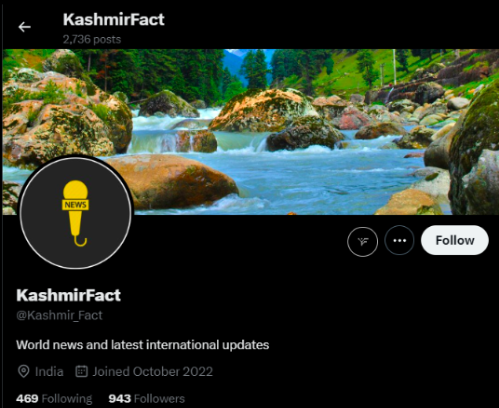 (Screenshot from X)
(Screenshot from X)
The Squadron
THE_SQUADRON was created on X in March 2023. The account claims to share the latest updates on foreign affairs, geo-politics, religion, economy, and sports. Our investigation revealed that the account was not only focused on providing insights into current events and cultural dynamics but was subtly weaving a narrative against Pakistan. It is a verified account with more than 4K followers.
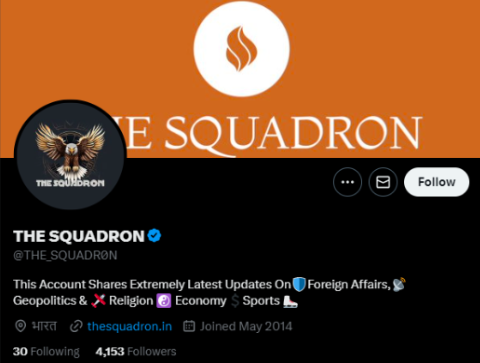 (Screenshot from X)
(Screenshot from X)
India Narrative
The “india_narrative” X account was launched into the digital ether in June 2023. Branding itself with the tagline “News | Views | Insight,” it set its sights on delivering comprehensive coverage on a range of critical and captivating topics, including South Asia/Indo-Pacific affairs, Kashmir, economy, and geo-culture. During our investigation, It became apparent that the ‘India Narrative’ was not only focused on providing insights into current events and cultural dynamics but was also involved in fabricating false narratives against Pakistan.
 (Screenshot from X)
(Screenshot from X)
OSINT UPDATES
The “OSINT Updates” X (Formerly Twitter) account was established in December 2020. Initially, it positioned itself as a source of open-source intelligence updates, with a focus on investigative reporting. Our investigation revealed that the account was not only focused on providing insights into current events and cultural dynamics but was also subtly weaving a narrative against Pakistan. It has more than 48K followers on X.
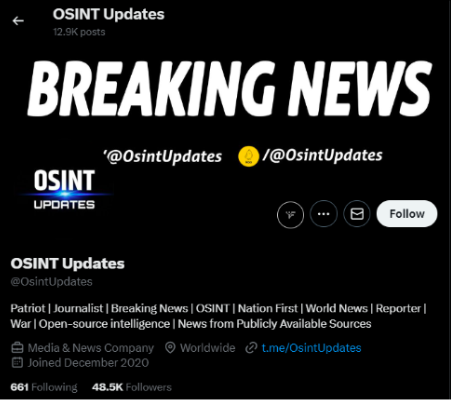 (Screenshot from X)
(Screenshot from X)
Here are a few case studies analyzed by our team to highlight and debunk India’s propaganda campaigns against Pakistan and its armed forces.
Case Study 1 – Circulation of a Fake Official Letter
The Indian propaganda accounts; Frontal Force, Nepal Correspondence, Kashmir Fact, and Baba Banaras shared a post that claimed to be a top-secret official document from the Government of Pakistan. This document supposedly states that Prime Minister Shahbaz Sharif wrote a letter to the Chief of Army Staff, General Asim Munir, informing him that the government does not have enough funds to pay the salaries of Pakistan Army officers. Additionally, it mentions that ammunition stocks are also nearly depleted due to a shortage of funds, coinciding with recent Taliban attacks on the Pak-Afghan border.

(Screenshots from X)
While reporting, these posts collectively had more than 23K views.
Fact-Check
To check the authenticity of the claims made by the Indian propaganda accounts, our team began a fact-checking process. We started by confirming the authenticity of Prime Minister Shahbaz Sharif’s official signature. We discovered that the signature on the circulated letter did not match Prime Minister Shahbaz Sharif’s official signature.

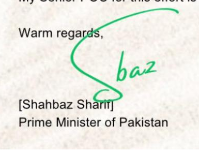
(Original Signature of PM Shahbaz Sharif) (Fake Signature shown on circulated Letter)
We also verified the layout of official documents of the Prime Minister’s Office and found that the official format doesn’t match the letter shared by Indian propaganda accounts.
 (Picture of an official letter signed by PM Shahbaz Sharif)
(Picture of an official letter signed by PM Shahbaz Sharif)
Moreover, We found that the “Top Secret” stamp on the shared letter is a creative common stamp, which can also be purchased online.
 (Screenshot from Redbubble Website)
(Screenshot from Redbubble Website)
Our fact-check confirmed that the letter shared by Indian propaganda accounts is fabricated and is unrelated to the official statement of Prime Minister Shahbaz Sharif. The discrepancies in the signature, document layout, and the usage of a common “Top Secret” stamp indicate that the document is forged to propagate false claims against the Pakistani government and army.
Case Study 2 – Pakistan Army Surrendered to Tehreek-i-Taliban Pakistan
The Indian propaganda accounts Frontal Force, The Squadron, Kashmir Fact, and Indian Narrative collectively circulated an image purporting to show Pakistan Army soldiers surrendered to the Taliban. This act is part of a broader disinformation campaign to spread misleading narratives.

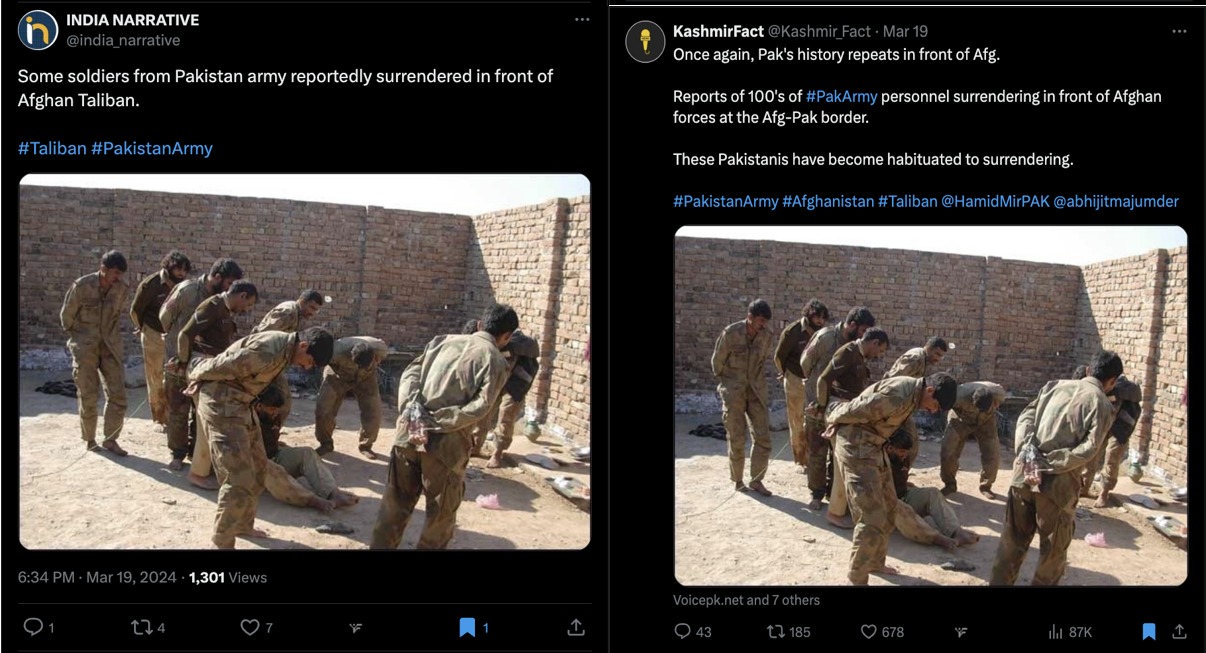
(Screenshots from X)
Fact-Check
To verify the claim, our team performed a reverse image search. The reverse imaging technique revealed that the shared images date back to somewhere between 2008-2010. The origin of the pictures could not be verified, but the same pictures have been circulated by Afghan & Indian social media and some news outlets with misleading claims over the past few years.
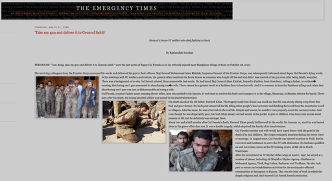 (Screenshot from The Emergency Times website)
(Screenshot from The Emergency Times website)
For further verification, we compared the Pakistan Army uniform from 2008 and 2024. We found that the uniform in the shared picture is not the current uniform of the Pakistan Army, it was from 2007-2012.


(8th COAS Ashfaq Parvez Kayani, 2008) (11th COAS Asim Munir, 2024)
Our fact-check confirmed that the images shared by Indian social media accounts do not depict recent events but date back to 2008-2010. The discrepancies in the uniforms further indicate that the images are not related to current events.
Case Study 3 – Civil War Errupted in Gilgit Baltistan
The Indian propaganda accounts Frontal Force, OSINT Updates, Baba Banaras and Nepal Correspondence disseminated multiple videos showcasing large-scale public gatherings in Gilgit Baltistan, with assertions suggesting the presence of a civil conflict against Pakistan.


(Screenshots from X)
Fact-Check
To check the authenticity of the claims made by Indian propaganda accounts, our team began a fact-checking process. We started by confirming the authenticity of the claim in mainstream media. We found that the demonstrations were held in Gilgit city and nearby areas on the call of the Shia sect Anjuman-i-Imamia. A demonstration was held in response to derogatory remarks by prominent Sunni cleric Maulana Qazi Nisar Ahmed. We found similar videos and images of the demonstrations on X and Instagram.
 (Screenshot from X)
(Screenshot from X)
 (Screenshot from Instagram)
(Screenshot from Instagram)
Our fact-check confirmed that the videos circulating on social media do not depict civil war demonstrations in Gilgit Baltistan. Instead, they show public demonstrations organized in response to derogatory remarks made by a Sunni cleric.
Analysis & Conclusion
The widespread circulation of deceptive stories and propaganda by India against Pakistan on social media platforms has considerable consequences for Pakistan’s reputation internationally. As this disinformation spreads unchecked, it not only damages Pakistan’s image but also jeopardizes its diplomatic ties and credibility in the global community’s perspective. The coordinated attempts to manipulate public views about Pakistan’s actions, especially in sensitive situations like Pak-Afghan border tensions, highlight the need for increased vigilance and proactive measures to counter the spread of misinformation.
Failure to address and mitigate the impact of India’s deceptive narrative influence can lead to lasting effects, including erosion of trust, diminished diplomatic goodwill, and potential geopolitical implications. Therefore, Pakistan needs to utilize robust strategies, including enhanced fact-checking mechanisms, diplomatic outreach, and international engagement, to effectively combat and mitigate the adverse effects of India’s propaganda efforts on its international image. Additionally, promoting greater transparency, disseminating accurate information, and fostering constructive dialogue with the global community are essential steps to safeguard Pakistan’s reputation and uphold its credibility on the world stage.
Despite the existence of numerous fact-checking platforms in India, their effectiveness in mitigating the spread of disinformation targeting Pakistan remains limited. The failure of these platforms to address the rapid dissemination of false narratives underscores the challenges in combating online propaganda and disinformation.
The analysis of these particular propaganda accounts was an effort to reveal the role of X accounts in actively disseminating disinformation. In general, this analysis by Factcheckly demonstrates how important it is to be cautious and think critically when dealing with information within conflict zones especially where narratives are often weaponized for strategic purposes.



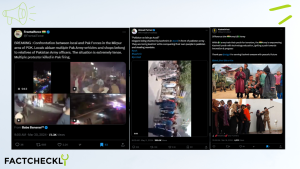










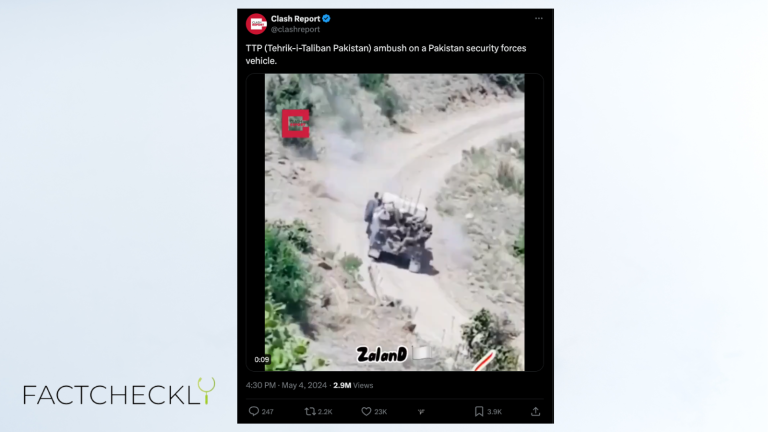
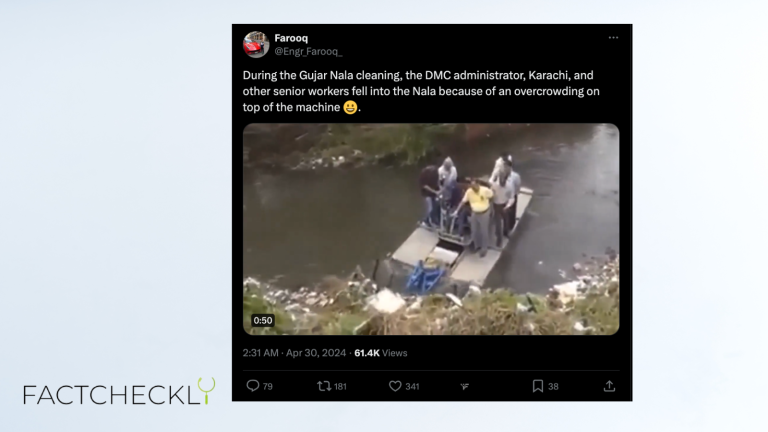

+ There are no comments
Add yours